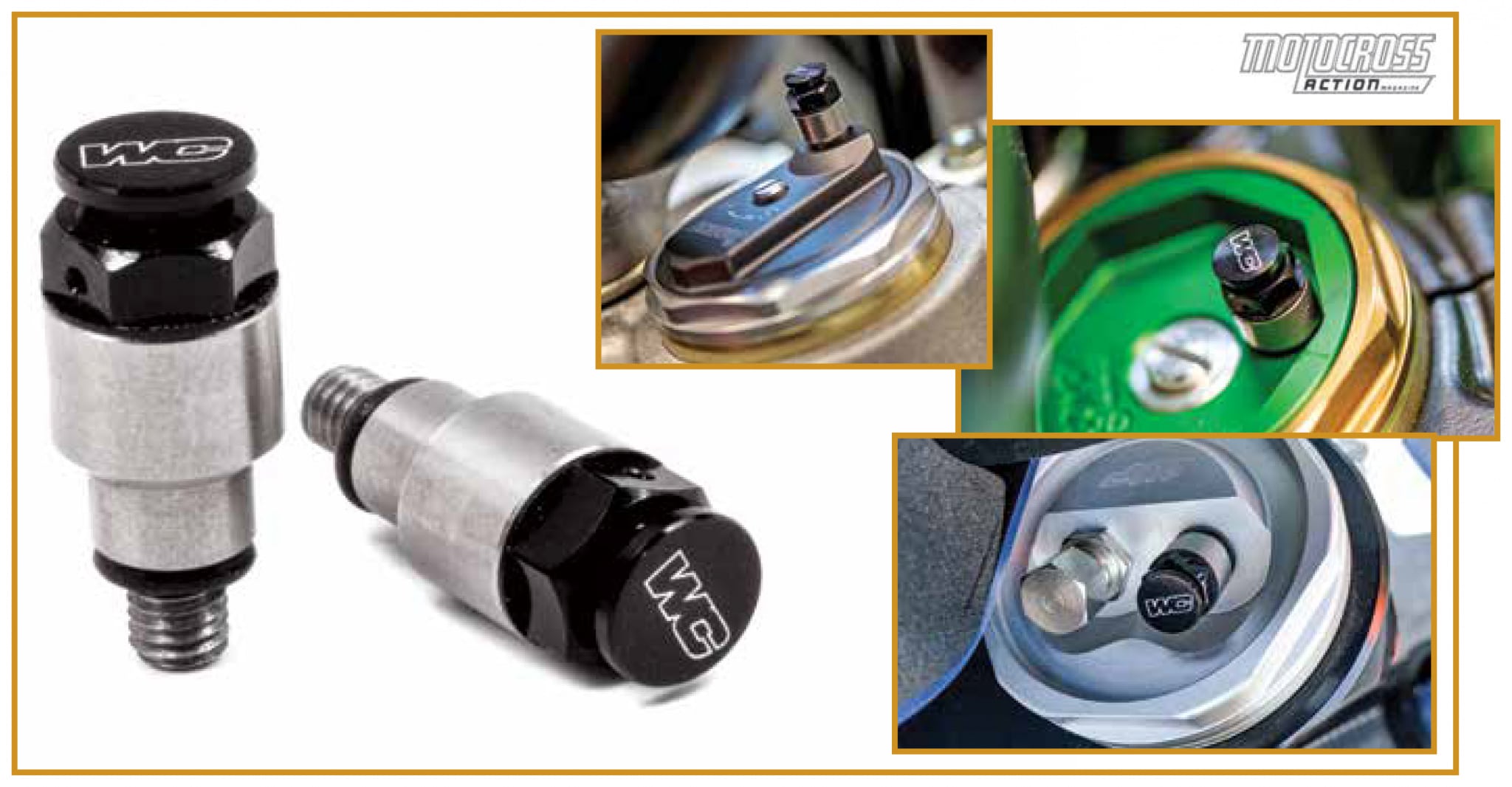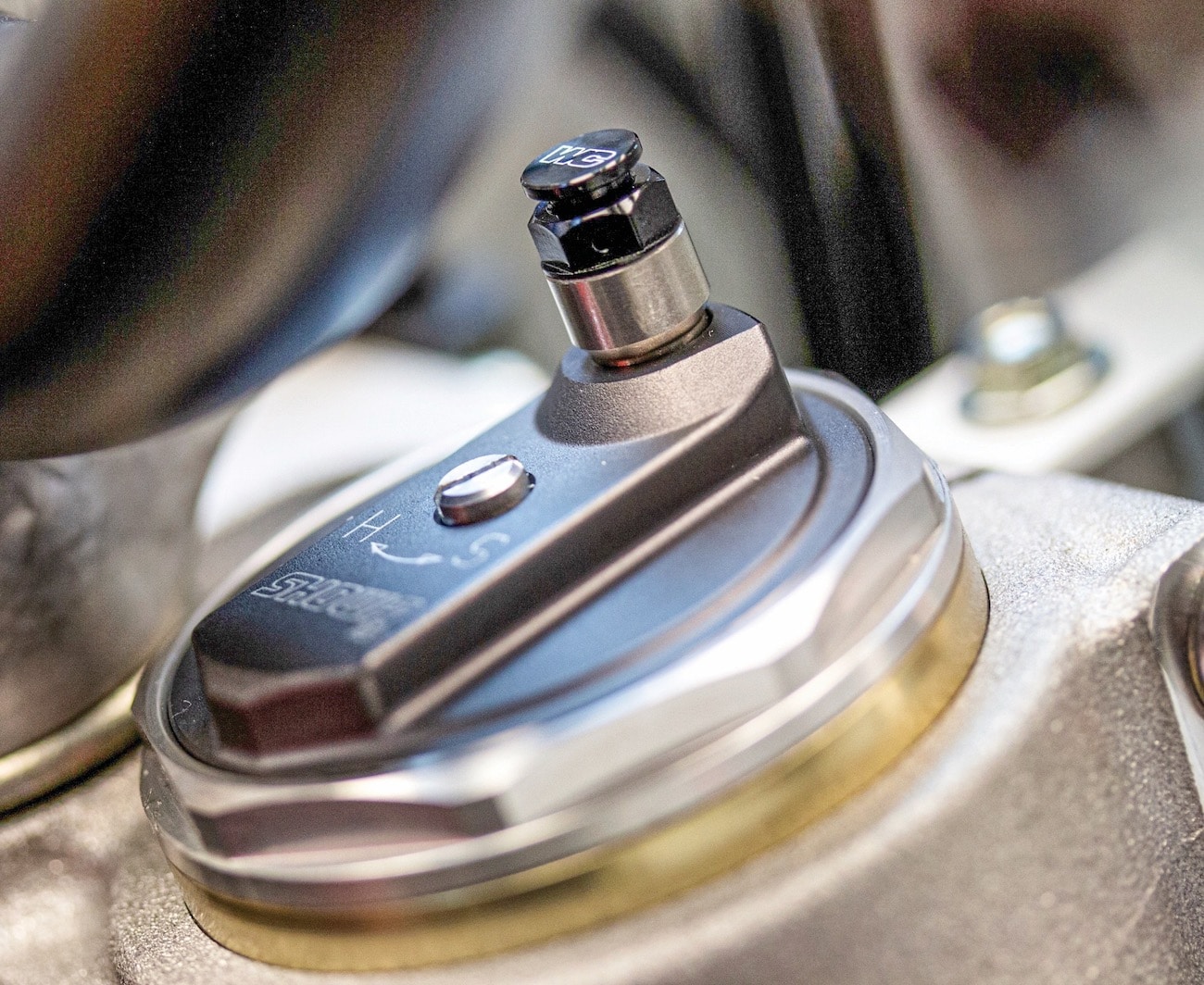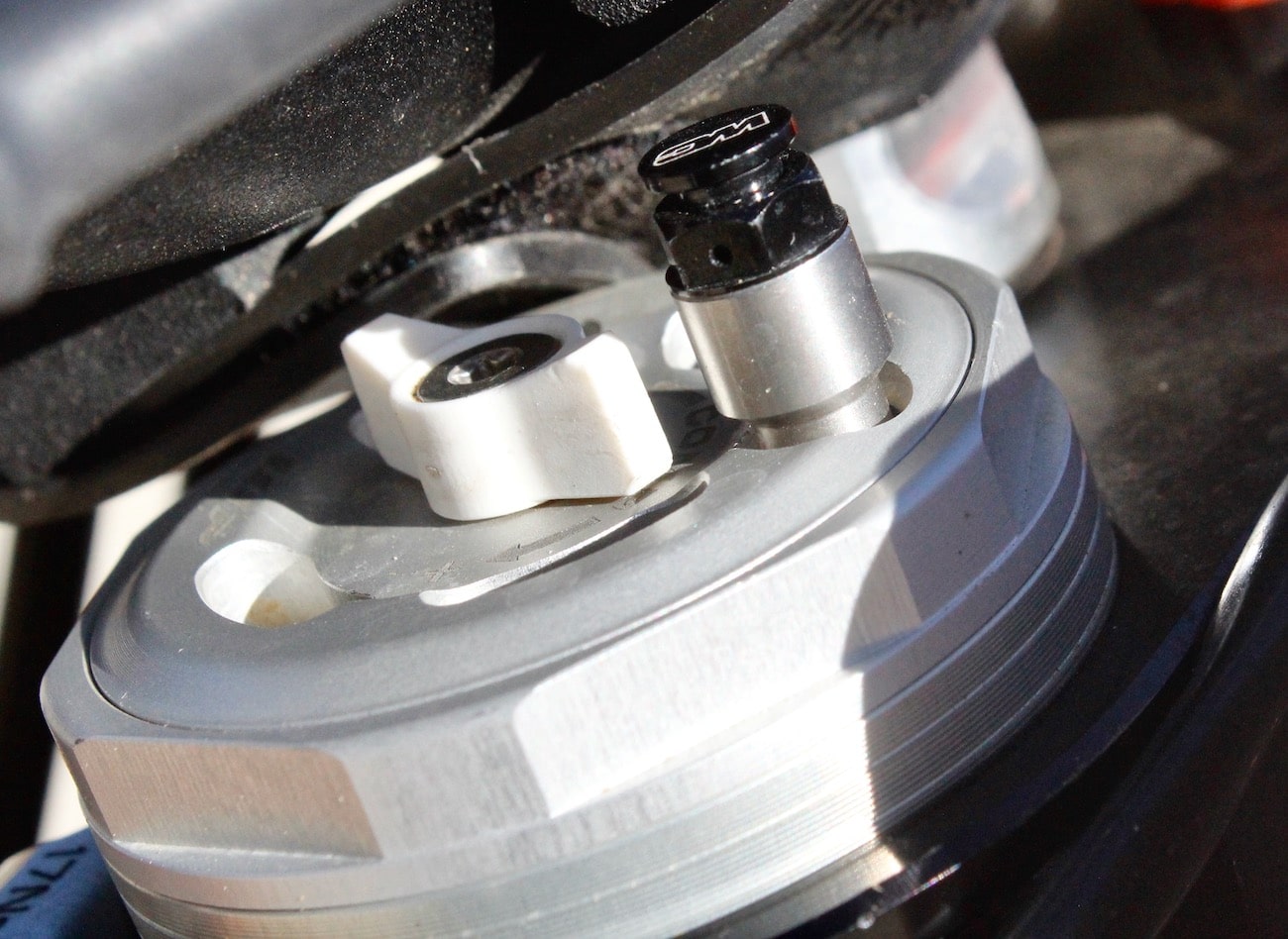MXA TEAM TESTED: WORKS CONNECTION SHORTY FORK BLEEDERS
WHAT IS IT? As you ride your bike across rough ground, the movement of the fork creates friction. The byproduct of the friction is heat. If you don’t believe us, reach down and grab your fork leg with your bare hand after a moto. The fork tubes will be hot—although on an air fork, the oil leg of the fork will be hotter than the air side. All this heat makes the air inside your fork tubes expand. And when air pressure rises inside a closed container, such as a fork leg, it resists being compressed. The hotter your forks get, the stiffer they become.
Now, you may think that since your bike has coil-spring forks, your bike is not affected by the expansion of hot air. Wrong! All forks, whether they are air forks or coil-spring forks, are air forks. There has to be an air chamber in all fork designs to compensate for the collapsing movement of the forks. And that air chamber, when it gets hot, will make your forks stiffer. How much stiffer? It depends on the ambient air temperature, the roughness of the track, the rider’s weight and his speed, but 4 to 5 psi on a WP air fork is a ballpark number.
WHAT’S IT COST? $24.95.
CONTACT? www.worksconnection.com .
WHAT STANDS OUT? Here’s a list of things that stand out with the Works Connection Shorty push-button fork bleeders.
(1) Concept. After a long, tough moto, your forks will be considerably stiffer than they were when the moto started. If you don’t bleed the expanded air out of the forks before your next moto, they are going to get a lot stiffer. Every manufacturer puts a bleed screw on the top of the fork caps to allow the rider to release the trapped air with a screwdriver or a #20 Torx driver. Bleeding your forks should be high on your must-do list between motos, but you can make the job a lot easier by installing Works Connection’s Shorty push-button air bleeders. They allow built-up air pressure to escape with the touch of a finger.
(2) Installation. Here is the simple three-step procedure. (1) Never put air in or bleed air out of your forks with the front wheel on the ground. Why? When the front wheel is on the ground, the weight of the motorcycle collapses the fork legs a small amount, which in turn changes the volume of the air chamber. (2) Take the time to clean the top of your fork caps before removing the old air-bleeder screws. Once you have the old bleeder screws out, you can simply thread the Works Connection push-button bleeders in. They have an O-ring to seal against any oil leaks. Don’t over-tighten the bleeders; they have a very small thread size and can break. (3) Position the push-button fork bleeders so they can be reached easily and where they are protected from roost and errant wrenches. This can be complicated by the handlebars, handguards and bar pads.
(3) Options. As you would expect, not every fork manufacturer uses the same size or thread pitch on its stock bleed screws. On the current crop of 2021 450cc motocross bikes, there are three different bleed-screw types. WP forks use Works Connection’s 26-330 part number, Honda and Kawasaki the 26-321, while Yamaha and Suzuki need the 26-320 part.
WHAT’S THE SQUAWK? No serious complaints, but there can occasionally be a small amount of oil mist when the air pressure is released.
MXA RATING: The world does not revolve around how quickly you can get the excess air pressure out of your forks; it revolves around whether or not you actually let the air out. The choice between digging in your toolbox for a tool or pressing a button should be fairly obvious.









Comments are closed.